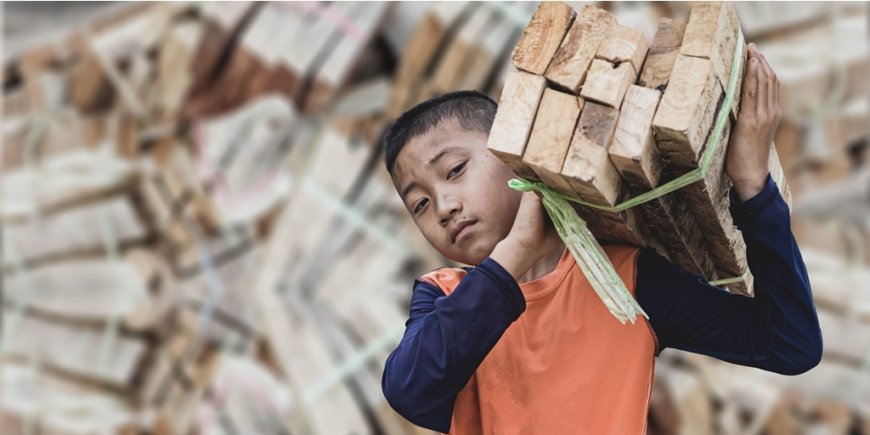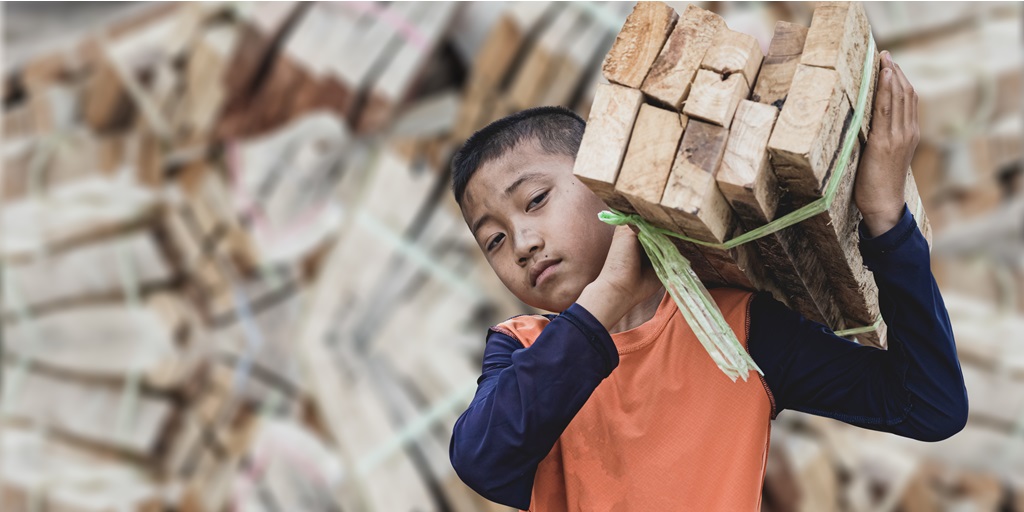Department of Labor Report Highlights Severity of Child Labor in the US and Worldwide
Department of Labor Report Highlights Severity of Child Labor in the ... Immigration Impact

The Department of Labor’s Findings on the Worst Forms of Child Labor

The Department of Labor (DOL) recently issued its yearly Findings on the Worst Forms of Child Labor report, examining 131 countries’ efforts to abolish child labor in 2022 and the obstacles those efforts face. The report highlights, in part, the vulnerability of migrant children in the United States working for little pay in industries that are especially unsafe for children and notes an alarming 69% increase in unlawful work by children since 2018.
Defining Child Labor and the Worst Forms of Child Labor
The International Labour Organization (ILO), a United Nations Agency, defines child labor as “work that deprives children of their childhood, their potential and their dignity, and that is harmful to physical and mental development.” The “worst forms of child labor” are those that harm children’s well-being and/or expose them to danger. This includes slavery, sexual exploitation, the use of children in armed combat, and exposure to dangerous machinery or toxic chemicals.
Minimum Age for Work
According to ILO standards, 15 should generally be a country’s minimum age for work. The standards allow for a lower minimum age in certain developing countries so long as it is not lower than the age children are legally required to attend school. According to the report, 85 countries do not have a minimum age for work that meets these international standards. Three countries had no minimum age for working at all.
Vulnerability of Migrant Children in the United States
Migrant children, particularly unaccompanied children, are especially vulnerable to child labor and human trafficking in the United States. The report noted a “significant increase in child labor in the United States.” Since 2018, there has been a 69% increase in unlawful work by children. Many of the children have been found working in industries that are unsafe for them, like the meatpacking and poultry industries, construction, and at major label food factories. The report also notes a concerning trend of states rolling back child labor laws, leaving children with fewer protections.
Recent Cases and Investigations
In February 2023, DOL announced the resolution of one of the largest child labor cases. Packers Sanitation Services, Inc., a large food sanitation services provider, paid $1.5 million in civil penalties after it was found to be employing over 100 children in unsafe jobs across eight states. The children worked with hazardous chemicals and cleaning dangerous equipment used for meat processing.
That same month, the New York Times examined the exploitation of unaccompanied immigrant children, many as young as 12 and 13, working grueling hours in industries across the country. Some of the children were working 12-hour days to pay off large debts owed for their journeys to the United States.
DOL and the Department of Health and Human Services, which oversees the release of unaccompanied immigrant children to sponsors, took several steps to increase protections for migrant children earlier this year. The changes include a DOL-led interagency task force to promote better information-sharing across agencies about issues related to children’s well-being, health, and education. The agencies also called on Congress to increase funding for enforcement and to increase penalties for companies found using child labor.
Just last month, DOL announced an investigation into Perdue and Tyson Foods after receiving reports of young migrant children working overnight shifts at the companies’ plants.
Conclusion
DOL and HHS are taking important steps to combat child labor and human trafficking in the United States, but this year’s report shows that federal agencies, together with NGOs, the media, and the public must remain vigilant and work to protect the most vulnerable from exploitative labor practices.
Filed Under
SDGs, Targets, and Indicators
| SDGs | Targets | Indicators |
|---|---|---|
| SDG 8: Decent Work and Economic Growth | Target 8.7: Take immediate and effective measures to eradicate forced labor, end modern slavery and human trafficking, and secure the prohibition and elimination of the worst forms of child labor | – Increase in unlawful work by children since 2018 – Exploitation of unaccompanied immigrant children in industries across the country – Investigation into Perdue and Tyson Foods after reports of young migrant children working overnight shifts at the companies’ plants |
| SDG 4: Quality Education | Target 4.1: By 2030, ensure that all girls and boys complete free, equitable, and quality primary and secondary education leading to relevant and effective learning outcomes | – Children working instead of attending school due to child labor |
| SDG 16: Peace, Justice, and Strong Institutions | Target 16.2: End abuse, exploitation, trafficking, and all forms of violence against and torture of children | – Child labor in industries that are unsafe for children, such as meatpacking and poultry industries, construction, and major label food factories – Rollback of child labor laws in some states |
1. Which SDGs are addressed or connected to the issues highlighted in the article?
SDG 8: Decent Work and Economic Growth
The issue of child labor and exploitation of migrant children in the United States is directly connected to SDG 8, which aims to promote sustained, inclusive, and sustainable economic growth, full and productive employment, and decent work for all.
SDG 4: Quality Education
The issue of children working instead of attending school due to child labor highlights the connection to SDG 4, which focuses on ensuring inclusive and equitable quality education and promoting lifelong learning opportunities for all.
SDG 16: Peace, Justice, and Strong Institutions
The issue of child labor in unsafe industries, the rollback of child labor laws, and the exploitation of unaccompanied immigrant children connects to SDG 16, which aims to promote peaceful and inclusive societies for sustainable development, provide access to justice for all, and build effective, accountable, and inclusive institutions at all levels.
2. What specific targets under those SDGs can be identified based on the article’s content?
Target 8.7: Take immediate and effective measures to eradicate forced labor, end modern slavery and human trafficking, and secure the prohibition and elimination of the worst forms of child labor
The article highlights the vulnerability of migrant children in the United States to child labor and human trafficking. The increase in unlawful work by children since 2018, exploitation of unaccompanied immigrant children in industries across the country, and the investigation into Perdue and Tyson Foods all align with Target 8.7.
Target 4.1: By 2030, ensure that all girls and boys complete free, equitable, and quality primary and secondary education leading to relevant and effective learning outcomes
The issue of children working instead of attending school due to child labor emphasizes the need to achieve Target 4.1, which aims to ensure that all children have access to quality education and complete primary and secondary schooling.
Target 16.2: End abuse, exploitation, trafficking, and all forms of violence against and torture of children
The child labor in unsafe industries, rollback of child labor laws, and exploitation of unaccompanied immigrant children are all forms of abuse, exploitation, and trafficking against children. These issues align with Target 16.2, which aims to end all forms of violence and exploitation of children.
3. Are there any indicators mentioned or implied in the article that can be used to measure progress towards the identified targets?
The following indicators mentioned or implied in the article can be used to measure progress towards the identified targets:
- Increase in unlawful work by children since 2018
- Exploitation of unaccompanied immigrant children in industries across the country
- Investigation into Perdue and Tyson Foods after reports of young migrant children working overnight shifts at the companies’ plants
- Children working instead of attending school due to child labor
- Child labor in industries that are unsafe for children, such as meatpacking and poultry industries, construction, and major label food factories
- Rollback of child labor laws in some states
4. SDGs, Targets, and Indicators
| SDGs | Targets | Indicators |
|---|---|---|
| SDG 8: Decent Work and Economic Growth | Target 8.7: Take immediate and effective measures to eradicate forced labor, end modern slavery and human trafficking, and secure the prohibition and elimination of the worst forms of child labor | – Increase in unlawful work by children since 2018 – Exploitation of unaccompanied immigrant children in industries across the country – Investigation into Perdue and Tyson Foods after reports of young migrant children working overnight shifts at the companies’ plants |
| SDG 4: Quality Education | Target 4.1: By 2030, ensure that all girls and boys complete free, equitable, and quality primary and secondary education leading to relevant and effective learning outcomes | – Children working instead of attending school due to child labor |
| SDG 16: Peace, Justice, and Strong Institutions | Target 16.2: End abuse, exploitation, trafficking, and all forms of violence against and torture of children | – Child labor in industries that are unsafe for children, such as meatpacking and poultry industries, construction, and major label food factories – Rollback of child labor laws in some states |
Behold! This splendid article springs forth from the wellspring of knowledge, shaped by a wondrous proprietary AI technology that delved into a vast ocean of data, illuminating the path towards the Sustainable Development Goals. Remember that all rights are reserved by SDG Investors LLC, empowering us to champion progress together.
Source: immigrationimpact.com

Join us, as fellow seekers of change, on a transformative journey at https://sdgtalks.ai/welcome, where you can become a member and actively contribute to shaping a brighter future.







